PARTNERSHIP FOR INNOVATION: A CHILD-TO-CHILD “TALKING BOOK”
“I like this drawing of rice field, river stream, and mountain. I drew this because people in my hometown work in rice field, they raise buffalos and cows, and we have mountains,” said Noy (pseudonym), a 14-year-old girl visiting a Drop-In Center of Friends International, when she described why she had drawn such picture.
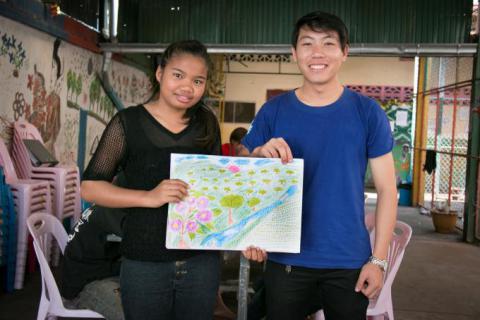
Photo 1: Noy (left) is holding one of her drawings with Friends International staff (right) at a Drop-In Center.
Recently in January 2016, Save the Children in Laos and Friends International entered into a partnership to create an illustrative book comprised of pictures children drew for other children to “read.” The result is a collection of beautiful drawings waiting to be interpreted by other children. They call it a Talking Book – a book without words.
This initiative is led by Els Heijnen-Maathuis, Senior Education Advisor at Save the Children in Laos, in collaboration with Venny Ala-Siurua, Technical Advisor at Friends International. Els explained why using this method when she said, “Child-to-child is an empowering approach, and disadvantaged children supported by Friends International can thus become powerful agents of change by creating innovative and interactive learning materials to improve other children’s oral language skills.” This is also another step for Save the Children in Laos to reach Every Last Child.
Disadvantaged children living in urban areas have been asked to draw anything they wanted to express. These children are those marginalized children, including those living and working on the street, in Drop-In Center at Friends International, children living in the landfill area, and school children in the outskirt of Vientiane Capital that Friends International are working with.
When consolidated, their drawings will be used by teachers to help grade 1 and 2 children in rural remote areas of Borlikhamxay province improve their oral language skills under the Save the Children’s literacy boost project.
In this process, our trained facilitators from Friends International sat down with these children. At the drop in center, a facilitator provided drawing materials and explained the activity to the children. They were allowed to draw anything they wish and use any crayons they preferred. When in the dump site, the facilitator did the same but, while giving time for children to draw, he also told stories to young children who gathered around the outreach car. The same process is also followed in school.
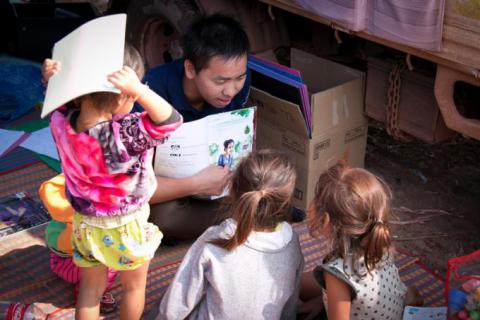
Photo 2: A facilitator is reading books to young children at a landfill.
What is unique coming out of this innovative activity is the aspirations of children in different locations. Children in the Drop-In center of Friends International and those in school expressed higher aspirations for their future compared to children in the landfill.
“I want to finish high school and go on to study nursing. I want to be either a nurse or a literature teacher.” said Noy while Chanthee (pseudonym), a 12-year-old primary school student also stated, “I want to have a house in the farm to raise animals. My father said that when I finish school, he would send me to study to become an expert in farming and animal husbandry.”
The high future aspiration is not shared among children in the dumpsite despite parental support. “I want to continue to do this[collect and separate recyclable trash at the dumpsite],” said a 12-year-old boy Kham (pseudonym) who lives at the dumpsite. Kham’s younger sister Seng (pseudonym), a nine-year-old, also expressed a similar view. Their mother Thone also said, “We [my husband & I] have some money to support some schooling, but I’m not sure about higher level.” Thone also said that Kham & Seng do not go to school regularly when she said, “Even though they go to school, they often miss classes because they want to be with us [their parents].”
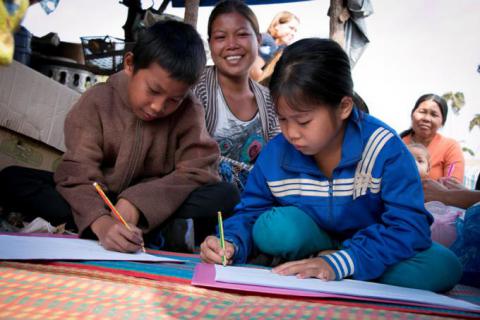
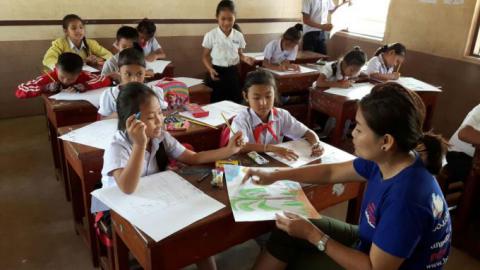
It is quite clear that urban poor children not in school regularly like Kham & Seng seem to have lower aspirations for their future in comparison to other disadvantaged children in the Drop-In center and in school like Noy and Chanthee.
In the end, these children have produced a set of drawings that will be bound together as a Talking Book to be printed and distributed to teachers in Borlikhamxay province who will be trained to use this book to facilitate oral literacy development for children.
More Photos:


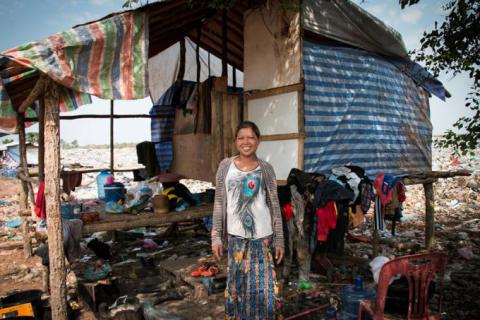
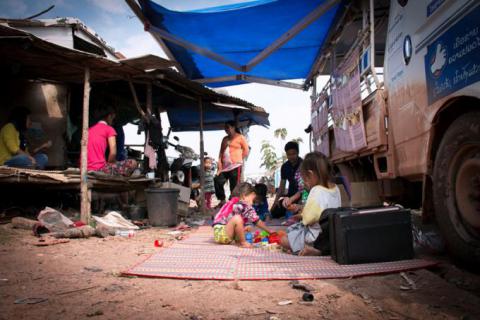

Some the Drawings Children Made:
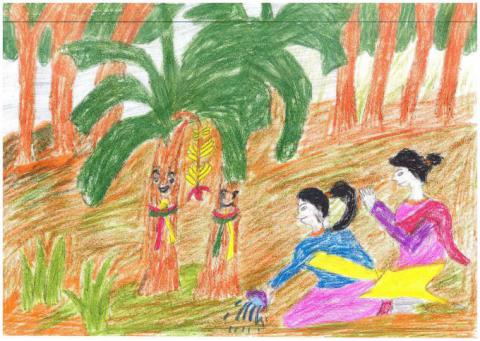
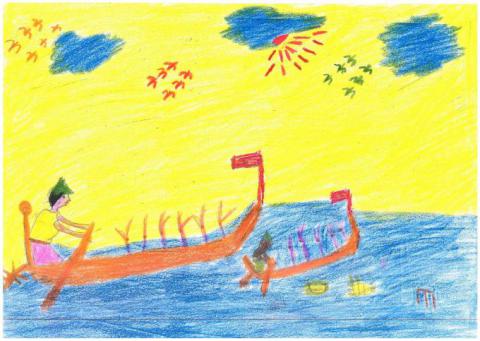

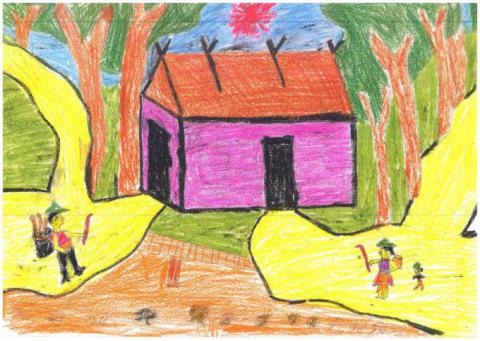
Author: Sankerdas Latthanhot
Photo: Sankerdas & Phayboon
 Laos
Laos